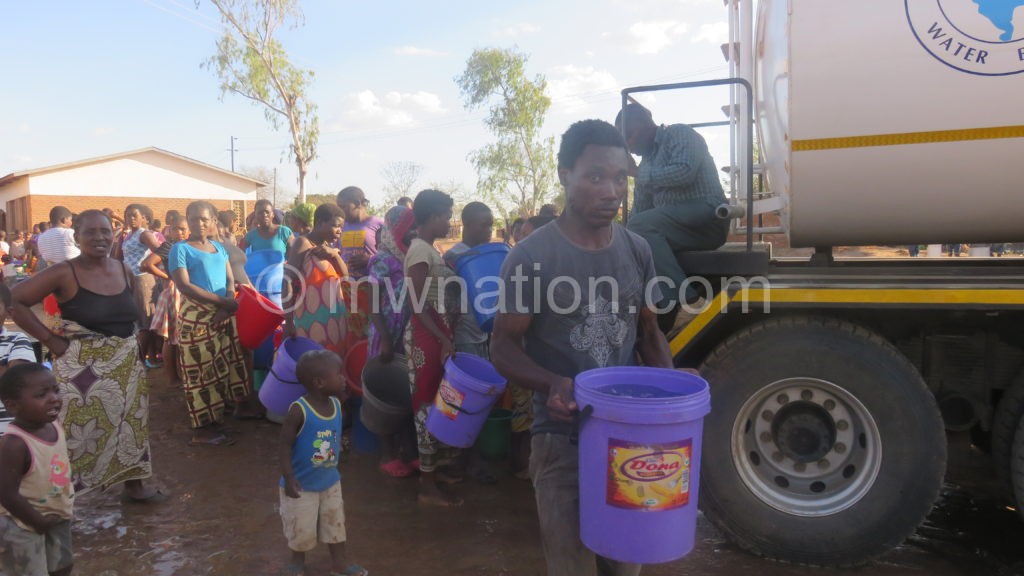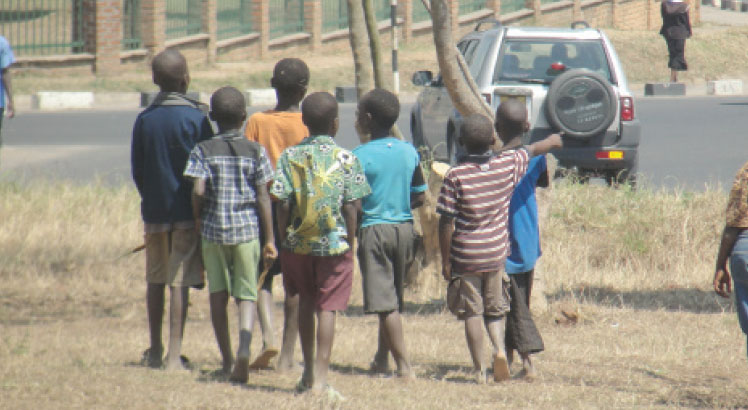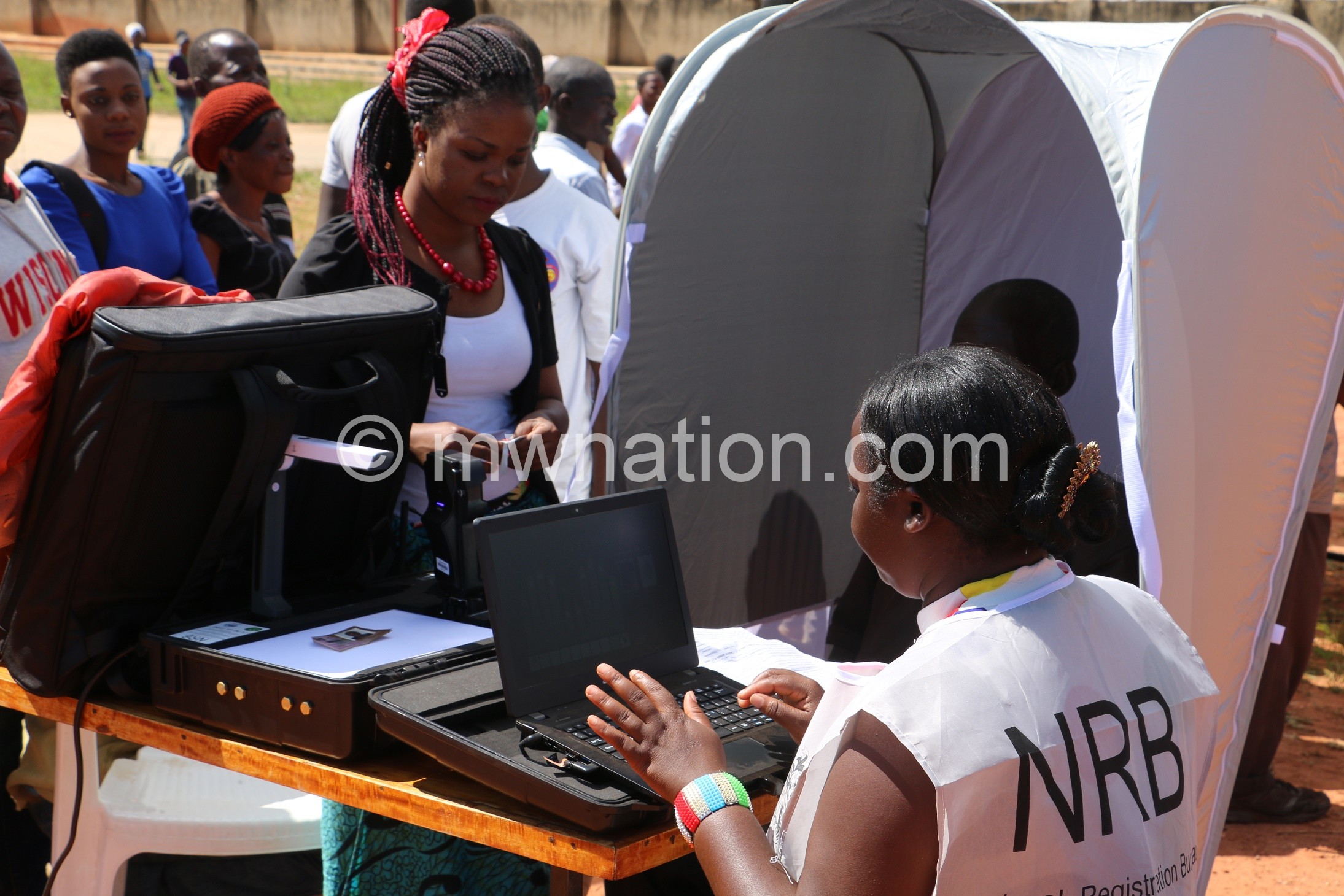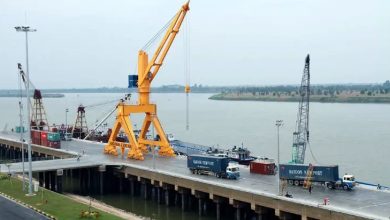Desperation of Malawi’s small Cape Town
Balaka is just one of many urban settlements facing a future with too little water, our Staff writer JAMES CHAVULA and our correspondent BATHLOMIEW KAWINA write.
When Cape Town in South Africa was planning to shut off the taps to almost four million people, Balaka residents in Malawi did not know they would suffer the same—perhaps the worst water crisis in southern Africa.

To them, the drying of reservoirs was a distant reality confined to one of the continent’s most affluent metropolitan city, located over 3 200 kilometres away.
However, residents of the small eastern town now stand in line for many hours to collect rations of drinking water.
Water has become the most scarce commodity since Mpira Dam in the neighbouring Ntcheu District run dry on July 27.
Almost 560 000 people in the two districts have been hit hard by the drying of the dam, which supplies 60 percent of Balaka Town.
“So far, life has never been easy. I don’t know what to do and where to go. I don’t have any water in my home,” says Eliza Mphamba, a teacher who resides in Mangerengere, a densely populated township in Balaka.
It is Wednesday just after 2pm when we catch up with her in a fierce scramble for water from an emergency truck in her populous township dominated by huts with rusty roofs and cracking sun baked bricks.

It is five days since the Southern Region Water Board (SRWB) last stopped in the area.
Before the water bowser’s arrival, hundreds of women and girls—with men here and there—were seen nesting in tree shades, anxious to fill the buckets stuck in a sprawling queue the size of two football grounds.
Mphamba has enough buckets to supply her family of six for two days, but no one is allowed to draw over 20 litres from the emergency bowser.
As the water crisis worsens, they get just five litres each. Families deploy children in the queue to increase their take-home, a trick that worries teachers as pupils are increasingly skipping classes to help their families fetch water.
Others are drawing water from contaminated streams and stagnant pools stuffed with garbage from homes and marketplaces.
The population is at risk of experiencing cholera and other waterborne diseases as the water bowser hardly comes every day.
By the sunny Wednesday afternoon, the people jostling for space in the long line said it had last come by the previous Friday.
Just a bucketful
The long wait for safe water increases desperation as thousands only have water for “an hour or less” at night.
At the sight of the water bowser, they rush to the front of the queue and battles for water begin.
SRWB officials say each person can fill only one bucket, no more.
Roughly, the 20 000-litre truck fills just about 1 000 buckets and jerry cans, leaving families with buckets at the tail-end of the queue likely to go home empty-handed.
Interestingly, some community members are willing to share the precious commodity to ensure everyone has little water until the SRWB truck reappears.
Mphamba, who teaches at Sosola Primary School, was stuck at the rear tip of the queue.
In no time, violent scuffles erupted. The water board officials could no longer control the situation that disrupted the water distribution exercise. They angrily jumped into the truck and sped off.
“Twenty litres may be negligible when taps are running, but a single bucket would have made a difference to my family of six. I am astonished. I don’t know what to do really. My family has run out of water” the teacher vented her pent-up frustration.
This dilemma pushes the waterless people to turn to unprotected sources stuffed with garbage from homes and markets for water for domestic use. Others endure long walks, following the truck to the next stop at Mponda Primary School near SRWB offices.
Since water vanished in Mpira Dam, two boreholes that are supposed to serve 200 people each have been serving thousands in Mangerengere.
To them, the fleeting water bowser offers a reprieve.
“We rely on the water bowser though it does not come so often. At the borehole, we spend over four hours to get water. Usually, we wake up as early as 1am to get to the front of the long, winding queues as the water crisis has left every borehole overwhelmed.”
Business slowdown
People searching for water lose several hours best spent doing income generating activities, including small scale businesses.
For Mphamba, who sells fritters, businesses have come to a standstill.
“I can’t concentrate on activities that can bring money because I have to ensure there is enough water at home. This means staying many hours at the borehole or waiting for the water truck.”
There is also a breakdown in sanitation and hygiene. In the worst hit communities, an opinion is rising that bathing and washing clothes and kitchen utensils are no longer priorities due to the raging water scarcity.
Both residents and visitors say one truckload of water is not enough for the town haunted by dry taps due to the vanishing water of the dam built in 1986 and opened in 1992.
The reservoir is located 42-square kilometre wetland which is hugely deforested that whirlwind freely sweeps dust and dry plant residues across treeless crop fields. For three straight years, the one-time lush rural setting under Traditional Authority (T/A) Kwataine has experienced shorter rainy seasons with prolonged dry spells.
According to Ntcheu district water development officer Onancess Nyirenda, rapid population growth and a record drought, exacerbated by climate change, have sparked one of the worst water shortages in the country.
“It has come as a surprise that by July, the dam has dried up. This has never happened before,” he states, stating the crisis provides ample proof that “climate change is real”.
Nowhere has the threat seemed to catch service providers more by surprise than it has in the districts that rely on the dam run by Mpira Trust.
SRWB spokesperson Rita Makwangwala says the utility was only informed by Mpira Trust two months ago that the dam was drying at an alarming rate.
But Ntcheu Civil Society Network chairperson Ismael Maulidi reckons authorities “failed to read signs of the times and act accordingly”.
He explains: “The dam did not dry overnight. All warnings were there. Forests were vanishing, land was being degraded, soil erosion was massive, the dam was being buried in silt, rains were dwindling year after year and so were water levels in the dam.
“For many years, government and relevant agencies made a common mistake: they neglected the warnings and continued doing business as usual while the crisis was looming. They hoped the country would get abundant rains as was the case in the past.”
Cape Town neglected
When Cape Town was running dry, Kelvin Winter, a lead researcher at an urban water group at the University of Cape Town likened this approach to “driving a motor car while looking at the rear mirror” instead of “the challenges ahead”
“Here comes the juggernaut,” he stated in reference to Day Zero—the day, projected for mid-April but later shifted to July 15, when Cape Town was projected to be forced to shut off taps to homes and businesses because reservoirs had gotten perilously low after receiving no rain for three years.
We travelled to Cape Town in April, just before city authorities had postponed the shutdown of taps.
Touching down, crew welcomed planeloads of visitors with an appeal to “help conserve water” as the city was facing the worst crisis in history.
Throughout the city, the early warnings had united people to use water sparingly with laws requiring every person to use no more than 50 litres a day.
In hotels, a litany of austerity measures was on display. No bathtubs. No lengthy showers. No running taps while scrubbing teeth or your body. Rewards for not changing linen. Maps illustrating how the reservoirs had fallen. Why not substitute handwashing with chemical sanitisers?
The urgency, transparency and accountability that saved taps in Cape Town from drying up by July 15 was conspicuously missing when pipes that were syphoning mud from Mpira Dam were finally closed two weeks later.
Before the delayed Day Zero, we asked the SRWB spokesperson how the utility had been affected by southern Africa’s protracted drought that had left Cape Town dry.
Even as crops in the Southern Region were wilting due to prolonged dry spells, her brief response was it was hard to tell because the water board has many dams that may not be affected the same way.
People of Balaka blame Ntcheu residents surrounding the dam for destroying the catchment because they felt left behind in the push to ensure everyone has access to safe water, according to Sustainable Development Goal (SDG) six.
Even Senior Chief Kwataine questioned why Ntcheu residents were not benefitting from water tapped from Mpira to Balaka. Likewise, Vice-President Saulos Chilima re-ignited the call for water from Ntcheu to benefit Ntcheu first at a rally of his United Transformation Movement (UTM) in the district this month.
Counting the costs
Meanwhile, affected Balaka residents want SRWB to increase the number of emergency trucks supplying water to avert a looming public health crisis and dehumanising scrambles for water.
SRWB spends about K120 000 a day to supply water to Balaka, says Makwangwala.
“In as much as it is the boards responsibility to supply potable water to our customers, the use of the bowser has put an additional strain on our limited resources. But we shall continue to do so until the situation normalises,” she says.
Makwangwala reckons the water supply to the town will increase as soon as the emergency water scheme currently under construction has been completed.
She backs calls for conservation of water and the ecosystem, saying: “Catchment protection remains a big challenge when it comes to the conservation of water as a scarce resource. There is need to collaborate efforts among all stakeholders in the country to invest in catchment conservation as well as civic education.
About 40 percent of Balaka residents use underground water pumped using giant boreholes. To reduce water stress, SRWB has drilled two high-yielding boreholes near Chingeni Turn-off and two more will be added under the Malawi Drought Resilience Project funded by the World Bank.
“The first two boreholes have been funded locally. They will be connected to the existing system from Mpira Dam and will go through the normal water treatment process up to distribution. However, SRWB has identified funding from the European Investment Bank to construct a new treatment plant in Liwonde which will cover Liwonde and Balaka from the Shire River,” said Makwangwala.
As the board turns to underground water to keep the dry town supplied, environmentalist Sosten Chiotha and Water for People director Kate Harawa warn that the drying of Mpira Dam, Lake Chilwa and other wetlands could be just a tip of a graver problem as ground water could be vanishing like surface water due to unsustainable human activity.





